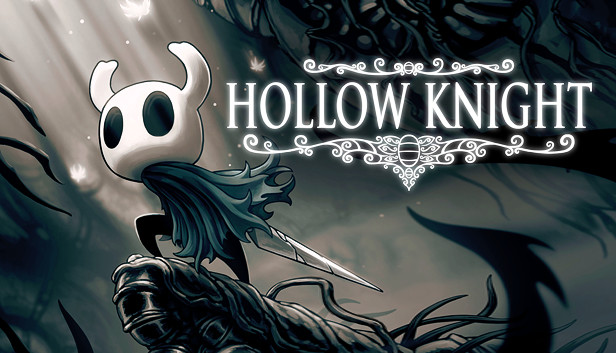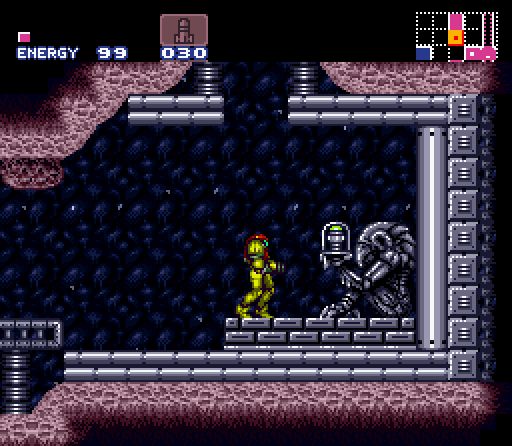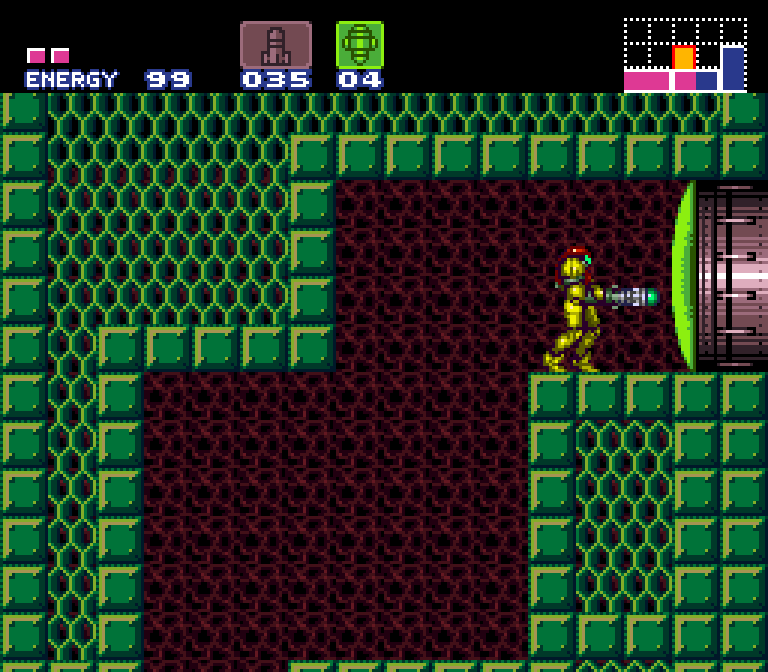I’ve been locked inside lately, for obvious reasons, and one of the games that I’ve been playing to pass the time is Hollow Knight. Released in 2017, Hollow Knight is an acclaimed Metroidvania style videogame developed and published by Team Cherry. In it, you take on the role of a wandering knight who must explore a vast ruined kingdom populated by bizarre insects. Although heavily influenced by Super Metroid, Hollow Knight’s calling cards are its hand-drawn art style and its Dark Souls approach to boss battles. The game’s brooding atmosphere and, at times, blistering difficulty have contributed to its status as a modern PC masterpiece.
However, one of my few gripes with the game is that it wields some of the conventions of the genre a bit too obtusely. Perhaps I am a little jaded after conducting research on Super Metroid for the last two months, but I thought I would put together a little write-up on exactly what those conventions are and how they were implemented in Hollow Knight. Although this article may seem a bit critical, my experience with Hollow Knight is mostly positive. I simply want to take the opportunity to scrutinize the game a bit, especially since its sequel is due out later this year.
What Is A Metroidvania?
Super Metroid (1994) and Castlevania: Symphony of Night (1997) are, as the portmanteau indicates, the progenitors of the “Metroidvania” videogame genre — action-adventure platforming games that focus on non-linear exploration and narrative. In these types of videogames, character abilities and/or power-ups serve double purposes. First, they increase the overall power of the protagonist, allowing them to defeat enemies and navigate space more easily. Second, they serve as a simple lock-and-key mechanism, allowing players to access and explore more of the game’s (oftentimes labyrinthian) world as they acquire them.
As an example: when Samus gains the Super Missile power-up in Super Metroid, she is able to greatly increase her damage output by firing large missiles at enemies in rapid succession. Additionally, Super Missiles can be used to open the green doors that block off certain parts of the game’s sprawling underground world. Since its introduction, this game design formula has been applied to future entries in the Metroid and Castlevania franchises and co-opted by numerous other action-adventure videogames. In essence, this approach is rooted in a sort of seriality. First, the games themselves use a serialized structure of collect-access-repeat to limit progression. Second, each entry in the series closely mimics this formula, although often incorporating new narrative and aesthetic elements.
Hollow Knight and Genre Conventions
The designers of Hollow Knight were clearly influenced by their predecessors, a fact made obvious in their approach to character abilities and progression. The knight begins the game with a very limited move-set — equipped with a weathered blade, a short hop, and a meager healing spell — and must explore every corner of the underground kingdom to earn new abilities and open up new paths. Possessing fewer literal doors than Super Metroid, most of Hollow Knight’s choke points revolve around mobility. Out-of-reach areas are a common barrier in the early game, requiring that the player acquire established Metroidvania abilities, such as the wall-jump, to traverse. In fact, one of the game’s most prominent cues is placing a platform just out of reach to entice you to revisit it when you’ve finally found the necessary ability.

Some movement techniques from Hollow Knight
This is, perhaps, where most of my frustration with Hollow Knight originates. The game’s progression formula is a bit too transparent at times, especially since many of Hollow Knight’s power-ups are directly sourced from other Metroidvania titles. I often wandered into a room, scanned the area, then thought to myself: “well, I guess I’ll come back here when I finally find the [REQUISITE MOBILITY ABILITY].” Instead of being intrigued by new barriers, I found myself assembling lists of locations that I would have to revisit once I found the unstated (but obvious) power-up required to access them. For veteran players, this may be especially painful since you begin the game missing some abilities that are provided by default in other Metroidvania titles. Both wall-jumping (which allows the player to pivot off walls to ascend vertically) and dashing (which allows for short bursts of speed) must be acquired, making movement in the early phases of the game slow and somewhat painful. I constantly felt shackled by these early restrictions, especially since many of the game’s enemies are designed to punish slow-moving targets.
I will say, however, that this problem does eventually fade to the background as the game progresses. Once you finally acquire two or three of the core movement abilities, the world opens up and you become much more capable of moving around and defending yourself. Although the time investment to reach this point is a little steep — I estimate about four of five hours of gameplay — the mid-to-late game of Hollow Knight is truly exceptional.
A Sequel?
Team Cherry recently confirmed a release date for Silksong, Hollow Knight‘s sequel, which appears to build upon the formula established in the original. Advertised as possessing “lethal, acrobatic action,” it will be interesting to see what aspects of gameplay the developers prioritize and what abilities will be considered central enough to be granted to the player from the onset. With players already well acquainted with the abilities and challenges of Hollow Knight, perhaps there is room to develop subtler lock-and-key mechanisms and provide more robust movement options in the early game.



